Is Climate Art the Right-Brained Approach We Need to This Crisis?
A new wave of climate art comes with a strong message for audiences who might not be reached by traditional media or the scientific community.
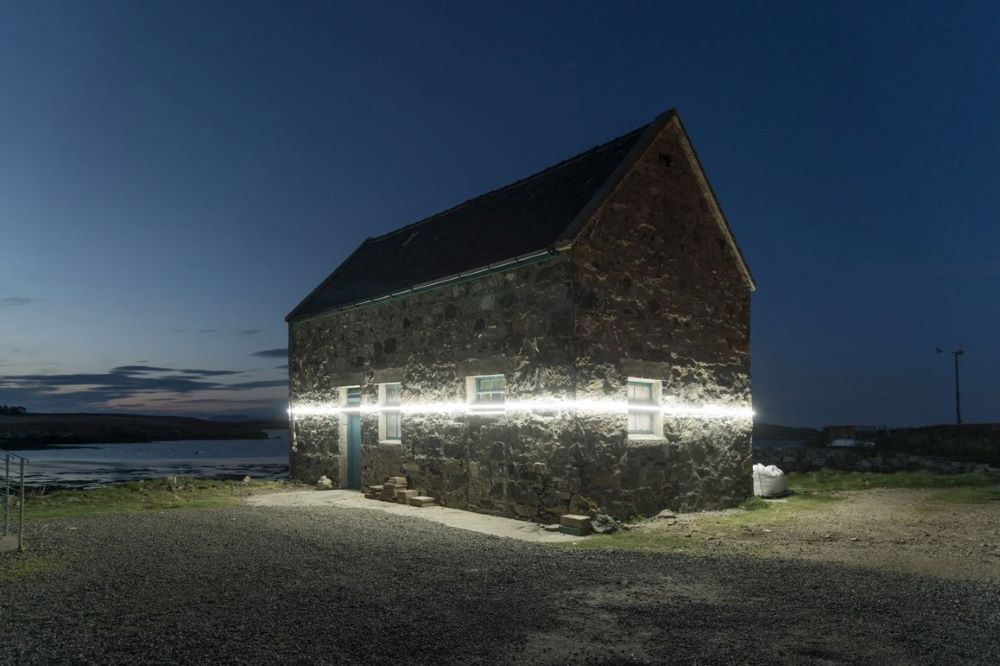
For creative types, watching the climate crisis unfold is a bit like sitting on the Titanic as it plunges into the ocean and realizing you don’t have an underwater welding degree or even, for that matter, a life vest. When you barely grasp the data in an IPCC report, but your heart drops at footage of melting Arctic glaciers, it’s easy to feel like the “soft skills” you’ve been perfecting for years have been a complete waste of time.
The artistic community is, however, finding its voice in the climate movement and creating work that comes with a strong message for audiences who might not otherwise be reached by traditional media or the scientific community.
It might be life-sized cars made of sand creating a traffic jam on the beach at Art Basel Miami, or lines of light showing projected sea-level rise, or even a totem pole made from golf bags; whatever the medium, this new wave of climate-inspired artists has the power to prompt others to think about the crisis in a new way, perhaps even inspiring them to make changes in their own lives.
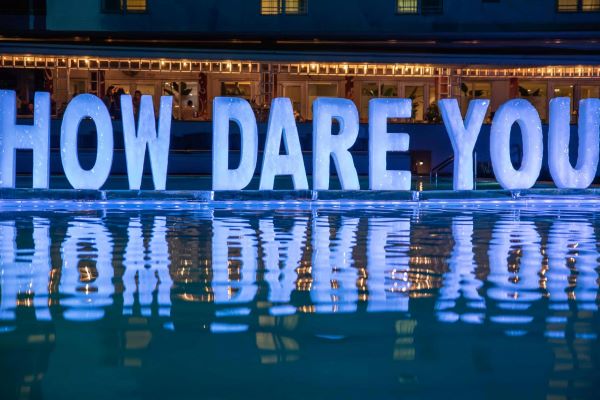
Justin Wu is one of these artists. The photographer from Toronto, Canada, has become known in recent years for his dark, moody portraits of dancers, actors and other performers. But as he began to pay more attention to environmental issues, he felt compelled to use his talent for a greater good. He connected with Todd Krim, who specializes in pairing Hollywood celebrities with charitable causes, and together they came up with the concept for #WorldIsInOurHands, a social media campaign run in partnership with UN Environment and its #ActNow initiative, which aims to inspire average citizens to fight climate change through simple, individual actions.
Wu’s celebrity portraits, shot in black and white with each subject cradling a crystal globe, form the aesthetic basis of this campaign. His more than 53,000 followers on Instagram have given it plenty of support, as have the actors themselves, including Susan Sarandon, Antonio Banderas and Rainn Wilson. Within the first two days of its debut, it garnered more than a million views, making it UN Environment’s fastest-growing campaign launch. Since then, #WorldIsInOurHands has seen more than 1.6 million engagements, reaching potentially more than 30 million people as momentum continues to build.
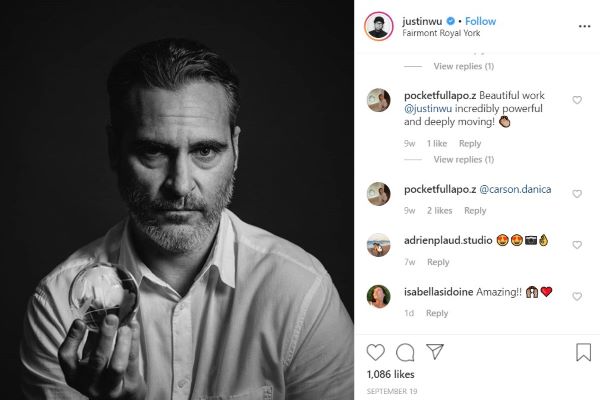
“What blows me away the most,” said Wu over the phone, “isn’t just that these people I’ve idolized are joining this, but actually the public’s response—the discussion in the comments is so positive and inspiring. People from all over the world are really taking the message to heart, and that’s what makes it all worthwhile.”
Even without celebrity connections and Instagram followers, it’s still possible to create art with an environmental message and see it resonate with a global audience. Sarah Lazarovic is an illustrator who writes a newsletter called Minimum Viable Planet. As she was trying to curb her fast fashion addiction, she found it useful to draw a pyramid chart to guide her clothing purchases. She called it the “Buyerarchy of Needs” and shared it on Facebook. Suddenly it started popping up on blogs, in magazines, in university lectures and across social media, often in different languages.
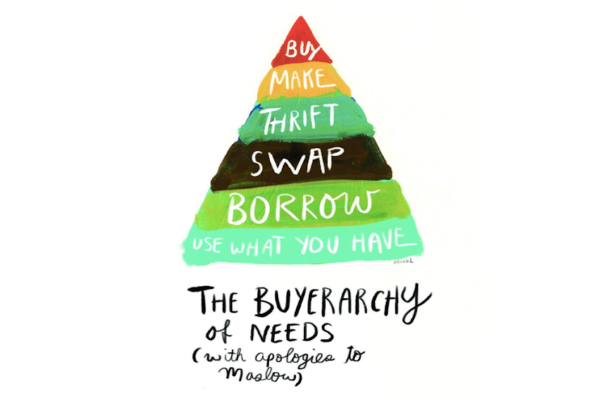
Lazarovic has said it’s hard to know whether it definitively inspired anyone to buy less stuff, but even if the Buyerarchy only served to make some people think about their consumption habits for a moment, she's happy. In fact, the artist continues to create new work as a means of processing her own thoughts and reactions to climate change, regardless of whether anyone sees it.
As Daniel Morchain reflected in his blog post here a few months ago, the path to a safe climate is not only built by research reports and policy amendments—it’s also dependent on less tangible and perhaps more right-brained factors. Navigating the effects of global warming and coming to terms with the drastic measures required to move forward in a truly sustainable way will be emotional and, to put it mildly, a bit messy.
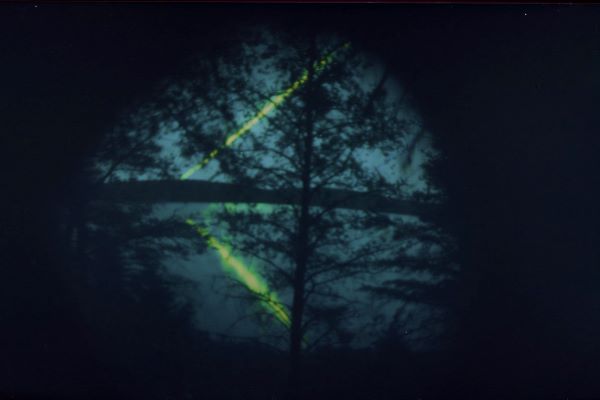
So what better way to process messy sentiments than with art? Regardless of whether it reaches the masses or inspires a global revolution, there is value in creating art for art’s sake. If taking underwater pinhole photos (as Lesley Nakonechny did recently through the Artist-in-Residence program at IISD’s Experimental Lakes Area) leads to learning something new about freshwater biodiversity, that’s important. The same goes for drawing a pair of fast-fashion shoes instead of buying them to help satisfy consumerist cravings or even writing poetry about the climate to serve as a lyrical reminder of what is at stake. In fact, a climate-themed screenwriting contest happening now encourages precisely this.
As Norwegian artist Thale Fastvold observed quite astutely, “Science has a communication problem that art can solve.” But climate-responsive art has more benefits than simply solving for a communications issue—it can offer new perspectives on old problems, bring otherwise disparate audiences together, and foster accountability and collective agency. And, even if it’s only experienced by one person, it has the power to inspire both dialogue and action.
Vanessa Farquharson is IISD’s communications manager. She processed her feelings about climate change a few years ago by making 366 green changes to her life and writing about it.
You might also be interested in
What Does Climate Adaptation Look Like in Action? Here are nine locally led, nature-based ideas
What does Nature-based solutions (NbS) for adaptation look like for the communities involved? From cultivating seaweed seeds to planting hurricane-resistant trees, here are nine locally-driven ideas.
Nations are exiting a secretive system that protects corporations
Bolivia was the first nation to begin leaving a legal system that allows foreign companies to sue governments behind closed doors. Now, other countries are following.
UK must cut ECT legacy to become green superpower
A novel agreement could tackle Energy Charter Treaty claims and boost post-Brexit EU ties, writes IISD's Lukas Schaugg.
IISD's Best of 2024: Articles
As 2024 draws to a close, we revisit our most read IISD articles of the year.
